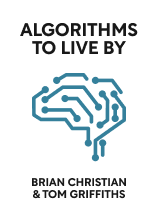

This article is an excerpt from the Shortform book guide to "Algorithms to Live By" by Brian Christian and Tom Griffiths. Shortform has the world's best summaries and analyses of books you should be reading.
Like this article? Sign up for a free trial here .
How do you approach problem-solving in day-to-day life? What do you do when faced with a complex problem—one that has no obvious solutions?
Some daily problems seem impossible to solve—for example, complex optimization problems in which you need to find the optimal arrangement of a set of variables to achieve the best outcome under specific constraints. If you’re trying to purchase the cheapest airline tickets available that get you the most vacation days with good weather or trying to minimize risk in your investment portfolio, you’re solving an optimization problem.
Here is how to solve complex problems with no obvious solutions.
How to Solve Impossible Problems
Christian and Griffiths explain that when optimization problems reach a certain level of complexity, they become impossible to solve in the sense that they would take too long for even the fastest computer on earth to calculate the perfect solution. Since we don’t have access to this level of computing power in our lives, perfect solutions are often far out of our reach, even for relatively simple optimization problems.
Christian and Griffiths argue that the best way to solve complex problems like these is to strategically embrace imperfection.
Sometimes, simply lowering your standard for success is necessary to keep moving forward. In some cases where it’s impossible to find the perfect solution, getting close is just as good. Cristian and Griffiths argue that, at a certain point, the additional benefits earned by the “perfect solution” aren’t worth the cost of the time it would take to find it. Even when experts use computers to solve optimization problems, they often trade away accuracy to save time.
This strategy is far more effective than you would imagine. Christian and Griffiths explain that when computers are dealing with extremely complex optimization problems, they might calculate an answer half as good as the perfect solution in one quadrillionth of the time. Finding a solution that’s merely workable and moving on is often the best use of your time.
Rule #1: Temporarily change the rules to gain information about the true solution.
Even after accepting an imperfect solution, you may find it still isn’t good enough. In this case, Christian and Griffiths describe other ways of embracing imperfection to get closer to perfection.
First, by adjusting the rules of impossible problems, you can create solvable analogous problems that give you valuable information about the original problem. This strategy is known in mathematics as “relaxation.”
Christian and Griffiths explain that the most common form of relaxation is “constraint relaxation,” and it involves temporarily reducing or removing limitations on the problem. People using this strategy imagine the ideal form of the problem they have, solve it, and learn from that solution.
For example, imagine you’re struggling to compose a poem for a contest, and entries can only be a maximum of fifty words long. In a sense, this is an impossible optimization problem. You want to find the right combination of words that will earn you the win, but it’s obviously impossible to calculate the perfect poem.
If you’re feeling creatively stumped, with several drafts of “solutions” that aren’t good enough, you could try removing some constraints. You might remove the word count constraint, freewriting a thousand-word poem and see if that gives you any ideas. Alternatively, you could try removing some constraints on the language you’re choosing to use—dip into made-up words, or start using profanity.
Christian and Griffiths argue that the insights you gain from solving easier iterations of the problem will help you get closer to the original solution. The poem you wrote full of profanity might be your best one yet after you’ve reapplied the constraints and taken out the expletives.
Rule #2: If the rules are bendable, try bending them.
The final relaxation technique, and perhaps the most easily applicable one, is called “Lagrangian relaxation.” With this strategy, you remove some constraints on the problem as a part of your ultimate solution, penalizing broken rules instead of forbidding them entirely. By allowing the rules to bend, you’re not just relaxing constraints as a thought exercise anymore—you’re doing it in real life. Bending the rules and suffering the consequences is sometimes the only way to solve a complex problem.
Imagine a pregnant woman going into labor in the passenger seat of a car as her husband desperately looks for a place to park at the hospital. The closest lot is full, but there is a handicapped parking spot open nearby. Normally, the driver would never consider parking in that spot, but, using Lagrangian relaxation to solve the problem, he decides that it’s worth it to take the spot and pay whatever fine is necessary.
| When Bending the Rules Is the Right Thing to Do In many settings, people see “bending the rules” as an outright immoral thing to do and would scorn the idea of Lagrangian relaxation. However, even history’s noblest heroes had to make compromises to achieve a greater good. As described in Malcolm Gladwell’s David and Goliath, even Martin Luther King Jr., a moral absolutist who famously denounced violence for a higher cause, stretched the limits of morality in his push for civil rights. For example, he deliberately allowed hundreds of child volunteers to be imprisoned and threatened with police dogs so the resultant publicity would garner sympathy for their cause. How do you know when bending or breaking the rules is the right thing to do? The answer to this question will vary depending on your values, but one thing is certain: When you bend the rules, be aware of what you’re sacrificing. Lagrangian relaxation requires you to pay a penalty because most constraints confer certain benefits that you lose by bending the rules. For this reason, it’s important to fully understand rules before breaking them. For example, Pablo Picasso mastered the rules of traditional painting—perspective, light, and shadow—before throwing them out the window. He knew the exact effect that these techniques gave his paintings, which allowed him to intentionally achieve a specific groundbreaking effect by sacrificing them in his cubist work. |

———End of Preview———
Like what you just read? Read the rest of the world's best book summary and analysis of Brian Christian and Tom Griffiths's "Algorithms to Live By" at Shortform .
Here's what you'll find in our full Algorithms to Live By summary :
- How to schedule your to-do list like a computer
- Why making random decisions is sometimes the smartest thing to do
- Why you should reject the first 37% of positions in your job search






